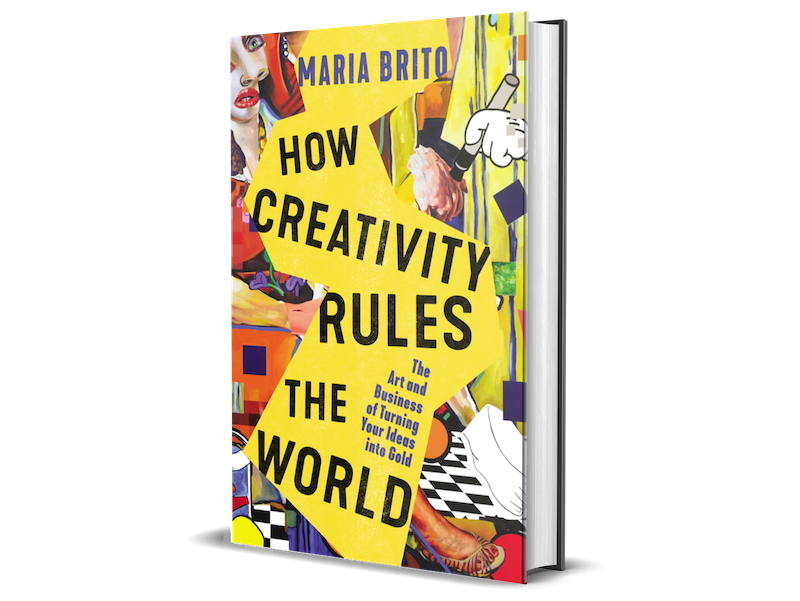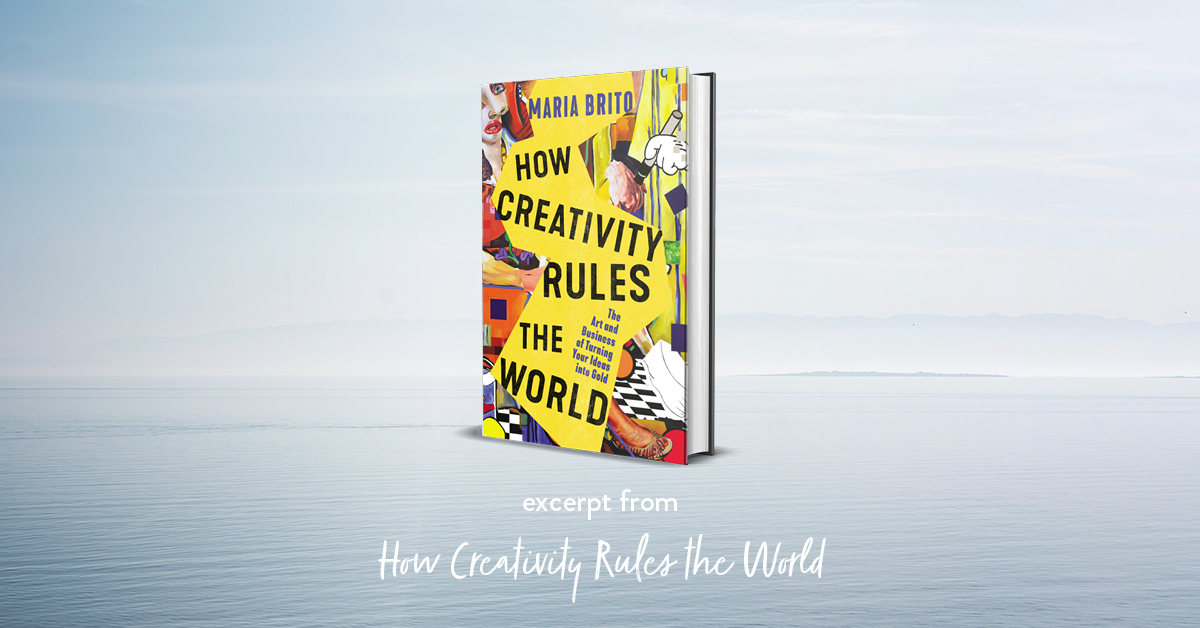Excerpt from How Creativity Rules the World by Maria Brito
Spending time in silence and alone doesn’t mean you should be isolated or disconnected from the world. It means carving out daily moments to just “be,” or, as the writer Virginia Woolf put it, “having a room of one’s own.” That “room” should be mental, but when possible, also physical. We need pockets of calm and silence daily. Coworking spaces, trading floors, “friendly” open-floor-plan offices, along with our incessant addictions to electronics, social media, and news, are slowly but surely strangling our best ideas.
We live in a world that refuses to appreciate the benefits of solitude and introspection. In 2014, a group of psychologists from Harvard University and the University of Virginia evaluated 431 undergraduate students in eleven separate studies. They found that participants typically did not enjoy spending six to fifteen minutes in a room by themselves with nothing to do but think. Given the option, many preferred to self-administer electric shocks to being alone with their thoughts. Most people seem to prefer to be doing something rather than nothing, even if that something is negative.
Solitude makes artists, inventors, and entrepreneurs observers of their own thoughts and feelings. How can we create or birth ideas of value without a calm mind? Silence and solitude support what Graham Wallas, an English psychologist, in 1926 called the “incubation” effect. When we incubate, we voluntarily take a break from a problem and resume it later (one hour, one day, one week) with a fresh mind and approach, ready to welcome a creative breakthrough. Often, when you don’t dwell on a problem and spend some time in silence, the answer comes to you. Have you had that experience? The combination of letting go and clearing your brain through moments of silence often works.
Calm in the Chaos
Silence and solitude were part of the lives and routines of two of the most innovative people of our era: the founders of Apple, Steve Wozniak and Steve Jobs. “Woz,” as everyone calls Wozniak, designed, developed, and programmed the Apple I and Apple II, the first successful mass-produced microcomputers. Woz recounts in his memoir that ever since he was in high school, he loved assembling and disassembling computers in his bedroom, quietly on his own. He also likened inventors and engineers to artists, and encouraged them to work alone, outside of big corporate structures.
Jobs got deep into meditation, after discovering at the age of nineteen books like Zen Mind, Beginner’s Mind by Shunryu Suzuki and Autobiography of a Yogi by Paramahansa Yogananda. He became a student of Eastern spirituality and emphasized the need for quieting the mind. In 1973, he traveled to India for the first time. It was the beginning of his lifelong dedication and discipline to exploring a variety of meditation techniques and participation on silent retreats. Zen Buddhism became Jobs’s meditation style, which he practiced daily. He told his biographer Walter Isaacson, “If you just sit and observe, you will see how restless your mind is . . . but over time [with meditation] it does calm, and when it does, there’s room to hear more subtle things—that’s where your intuition starts to blossom and you start to see things more clearly.”
Similarly, Bill Gates, the founder of Microsoft, practices “Think Weeks.” It began in the 1980s, when he retreated to his grandmother’s house to spend quiet time thinking. Today, twice a year, Gates spends one week in a cabin by a lake in Washington State. Alone, with no technology, he thinks and reads books and innovation pitches written by Microsoft employees.
During those Think Weeks, among several other breakthroughs, Gates came up with the momentous ideas of Internet Explorer (in 1995) and the Microsoft Tabletop PC (in 2001).
Alchemy Lab
- Set a goal of taking one hour every day just to think. Start with ten minutes for one week, increase it to fifteen the next, and continue in increments of five minutes until you comfortably reach one hour.
- If you take walks daily, use that time to think. Turn off your phone and walk in silence.
- As an alternative, meditate. Use an app or schedule time to close your eyes and quiet your mind. Focus on the rhythm of your breathing. Start with five minutes and add five minutes each week. When you reach twenty minutes a day, it will do wonders for your creativity and ability to generate new associative ideas.
- Reduce the amount of you time you spend checking social media, email, and texts, reading the news, and watching TV. Build up the amount of time until you achieve a complete detox of one day a week: no TV, no podcasts, no social media, no news.
- Practice setting aside one day where you use your phone only for reading books and perhaps receiving texts—but only if you need to. Otherwise, keep it on airplane mode or “do not disturb” from 8:00 a.m. to 8:00 p.m. (Nowadays, our phones are our portable offices, organizers, libraries, and daily planners, and I’m not sure we can live entirely without screens anymore.)

With How Creativity Rules the World, you can learn to make creativity work for your career. Maria Brito illustrates how creativity is merely a series of habits, actions, and attitudes that anyone can develop—regardless of who you are or what you do.

